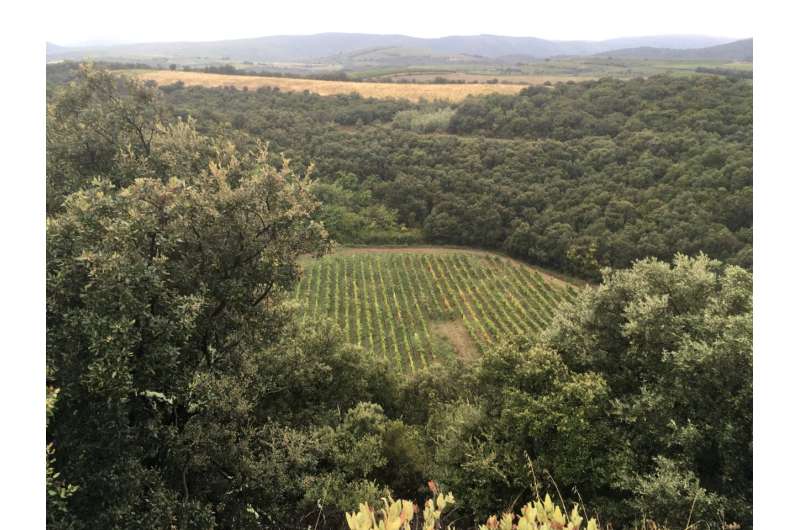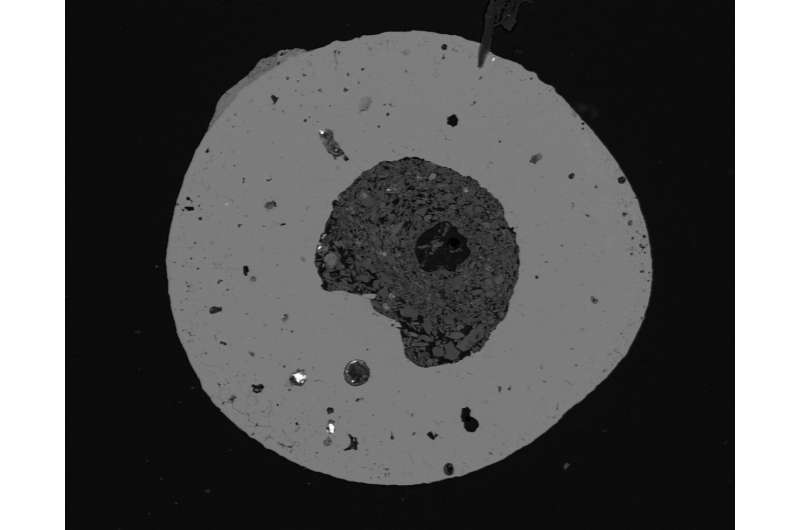This article has been reviewed according to Science X's editorial process and policies. Editors have highlighted the following attributes while ensuring the content's credibility:
fact-checked
trusted source
proofread
Meteorite crater discovered in French winery

Countless meteorites have struck Earth in the past and shaped the history of our planet. It is assumed, for example, that meteorites brought with them a large part of its water. The extinction of the dinosaurs might also have been triggered by the impact of a very large meteorite.
Meteorite craters which are still visible today are rare because most traces of the celestial bodies have long since disappeared again. This is due to erosion and shifting processes in Earth's crust, known as plate tectonics.
The "Earth Impact Database" lists just 190 such craters worldwide. In the whole of Western Europe, only three were previously known: Rochechouart in Aquitaine, France, the Nördlinger Ries between the Swabian Alb and the Franconian Jura, and the Steinheim Basin near Heidenheim in Baden-Württemberg (both in Germany). Thanks to millions of years of erosion, however, for laypersons the three impact craters are hardly recognizable as such.
Geologist and cosmochemist Professor Frank Brenker from Goethe University Frankfurt is convinced the new meteorite crater will now extend the list. While on holiday, the "Domaine du Météore" winery caught his attention. One of its vineyards lies in a round depression about 220 meters in diameter and 30 meters deep, and the proprietors use the scientific hypothesis that it is the impact crater of a meteorite—seemingly long disproved—as a marketing gag for their wine.
Although this hypothesis was proposed by several geologists in the 1950s, it was dismissed by acclaimed colleagues a few years later.

Frank Brenker explains, "Craters can form in many ways, and meteorite craters are indeed very rare. However, I found the various other interpretations of how this depression could have formed unconvincing from a geological perspective." That is why he and his wife collected rock samples for analysis in the labs at Goethe University Frankfurt—and indeed found the first signs of an impact crater.
Brenker says, "The microanalysis showed that dark-colored layers in one of the shists, which usually simply comprise a larger percentage of mica, might be shock veins produced by the grinding and fracturing of the rock, which in turn could have been caused by an impact." He also found evidence of breccia, angular rock debris held together by a kind of "cement", which can also occur during a meteorite impact.
The following year, Brenker took his colleague Andreas Junge, Professor of Applied Geophysics at Goethe University Frankfurt, and a group of students with him to Southern France to examine the crater in detail. They discovered that Earth's magnetic field is slightly weaker in the crater than in the surrounding area. This is typical for impact craters because the impact shatters or even melts the rock, which can thus contribute less to Earth's magnetic field.
With the help of strong magnets attached to a plate, the researchers also found tiny iron oxide spherules of up to one millimeter in diameter. Such spherules had already been found in other impact craters. Later laboratory analysis showed that the ones here also contained nickel-bearing iron and encased a core of minerals typical for the crater environment. In addition, the researchers discovered numerous shock microdiamonds produced through the high pressure during the meteorite's impact.
Frank Brenker explains, "Such microspheres form either through abrasion of the meteorite in the atmosphere or only upon impact, when a large part of the iron meteorite melts and then reacts with the oxygen in the air. On impact, material shattered at the point of impact might then also be encased. This, together with the lower magnetic field and the other geological and mineralogical finds, allows us to draw hardly any other conclusion: a meteorite did indeed strike here."
This makes the crater very exciting for geological laypeople too, says Brenker, because "every visitor can experience here the immense energies released upon such an impact."
More information: LPSC Houston 2023 Abstract #1910: Impact origin of the "Domaine du Meteore"-crater, France. Compelling mineralogical and geophysical evidence for an unrecognized destructive event in the heart of Europe.
Provided by Goethe University Frankfurt am Main





















